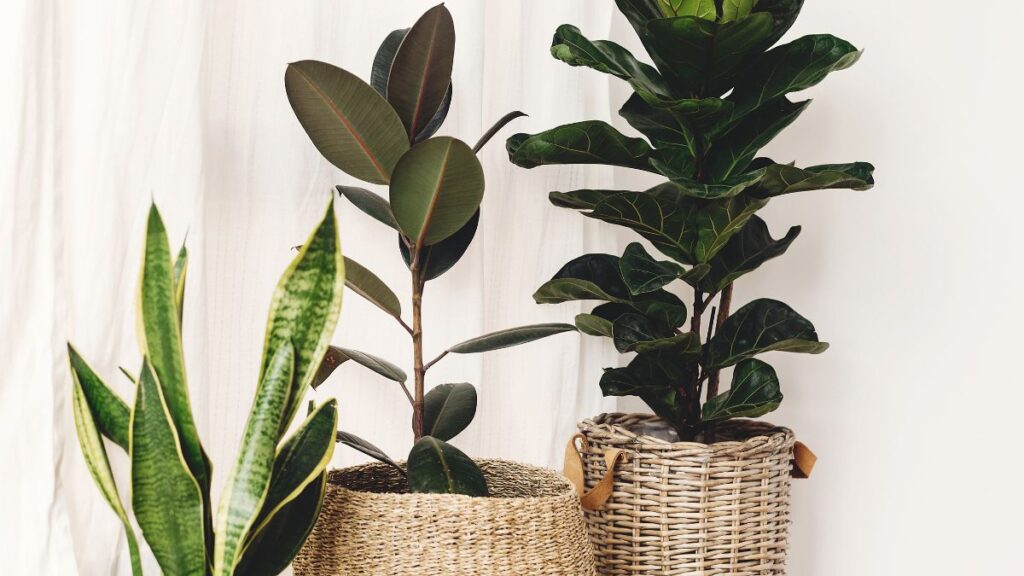types of Ficus plants. including the popular Ficus lyrata, Ficus elastica, and Ficus benjamina. Ficus plants, also known as fig trees, belong to the Moraceae family and are widely loved for their lush foliage and air-purifying qualities.
They encompass a diverse range of species, with some well-suited for indoor environments while others thrive outdoors. Ficus lyrata, commonly known as the fiddle leaf fig, is renowned for its large, glossy leaves that make a stunning addition to any interior space.
Ficus elastica, or the rubber tree, is treasured for its robustness and adaptability to different light conditions. On the other hand, Ficus benjamina, or weeping fig, is a popular ornamental tree featuring delicate, weeping leaves. Understanding the distinctions among these ficus types can help both indoor and outdoor plant enthusiasts make informed choices for their green spaces.
The Fascinating World Of Ficus Plants
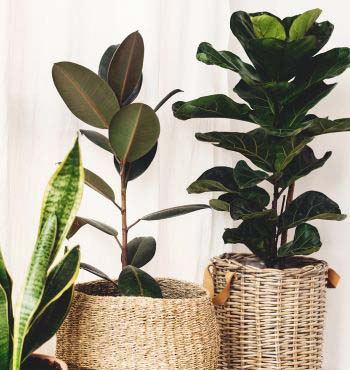
Ficus plants are a diverse and captivating group of plants that adorn many homes and gardens. These plants are known for their unique leaves and growth habits, making them a popular choice for both indoor and outdoor spaces. In this blog, we delve into the intriguing world of Ficus plants, exploring their history, benefits, and why they have become a staple in the world of gardening and landscaping.
Introduction To Ficus Plants
Ficus plants, belonging to the Moraceae family, encompass a wide array of species varying in size and appearance. These plants can be found in tropical and subtropical regions, thriving in warm, humid environments. Ficus plants are valued for their ornamental appeal and are often cultivated for their decorative foliage and air-purifying properties.
History And Origins Of Ficus Plants
The history of Ficus plants dates back thousands of years, with their origins traced to Asia, Australia, and the Mediterranean. These plants hold cultural significance in various societies, with some species being revered as sacred symbols. Ficus plants have also been utilized for their medicinal properties, playing a vital role in traditional medicine practices.
Benefits Of Growing Ficus Plants
- Enhanced Indoor Air Quality
- Natural Decorative Element
- Low Maintenance Requirements
- Stress Reduction and Relaxation
Additionally, Ficus plants are renowned for their ability to thrive in diverse conditions, making them an ideal choice for both novice and experienced gardeners. Whether used as standalone specimens or integrated into elaborate landscapes, Ficus plants add a touch of natural elegance to any setting.
Exploring Different Types Of Ficus Plants
If you adore lush, green houseplants, the Ficus family offers a wide array of stunning options to elevate your indoor spaces. From small shrubs to towering trees, exploring different types of Ficus plants introduces you to a world of diversity and beauty. Popular species of Ficus plants, each with their own unique features, offer an intriguing choice for plant enthusiasts. Knowing how to care for these remarkable plants is essential to keep them thriving in your home.
Popular Species Of Ficus Plants
When it comes to popular species of Ficus plants, there are several noteworthy options to consider:
- Ficus benjamina (Weeping Fig)
- Ficus elastica (Rubber Plant)
- Ficus lyrata (Fiddle Leaf Fig)
- Ficus microcarpa (Chinese Banyan)
Each of these species offers its own unique charm and benefits, making them popular choices for indoor plant enthusiasts.
Unique Features Of Each Ficus Species
The unique features of each Ficus species set them apart and make them appealing for different preferences and environments:
| Species | Unique Features |
| Ficus benjamina (Weeping Fig) | Graceful, weeping foliage; popular as a tree or as a bonsai plant |
| Ficus elastica (Rubber Plant) | Large, glossy leaves with attractive burgundy-tinged new growth |
| Ficus lyrata (Fiddle Leaf Fig) | Iconic broad, fiddle-shaped leaves; adds a touch of elegance to any space |
| Ficus microcarpa (Chinese Banyan) | Small, dark green leaves; ideal for creating a bonsai or topiary |
Caring For Different Types Of Ficus Plants
Caring for different types of Ficus plants involves understanding their specific needs, such as:
- Providing ample sunlight
- Maintaining proper humidity levels
- Watering according to each species’ requirements
- Regularly inspecting for pests and diseases
By tailoring your care routine to the particular needs of each Ficus species, you can ensure they flourish and enhance your indoor environment.
Indoor Cultivation Of Ficus Plants
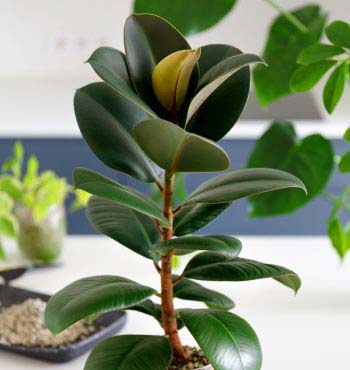
Ficus plants, also known as fig trees, are a popular choice for indoor cultivation due to their lush foliage and ability to thrive in a variety of indoor environments. Whether you’re a beginner or experienced plant enthusiast, cultivating ficus plants indoors can be a rewarding experience. In this article, we will explore the different types of ficus plants that are suitable for indoor cultivation, ideal growing conditions, and provide tips for proper indoor care.
Choosing The Right Ficus Variety For Indoors
When it comes to selecting a ficus variety for indoor cultivation, it’s essential to choose a plant that is well-suited for indoor conditions. Here are some popular ficus varieties that thrive indoors:
| Ficus Variety | Features |
| Ficus benjamina (Weeping Fig) | Tall, graceful tree with small, shiny leaves |
| Ficus lyrata (Fiddle Leaf Fig) | Large, fiddle-shaped leaves that add a dramatic touch to any space |
| Ficus elastica (Rubber Plant) | Thick, glossy leaves with a burgundy tint |
Each ficus variety has its own unique characteristics, so it’s important to choose one that aligns with your indoor space and personal preferences.
Ideal Growing Conditions For Ficus Plants
To ensure the healthy growth of your ficus plants, it’s crucial to provide them with the ideal growing conditions. Here are a few factors to consider:
- Light: Place your ficus plants in a location that receives bright, indirect light. Avoid exposing them to direct sunlight, as it can scorch their leaves.
- Temperature: Ficus plants thrive in temperatures between 60-75°F (15-24°C). Avoid placing them in cold drafts or near heating vents.
- Humidity: Ficus plants prefer higher humidity levels. Consider using a humidifier or misting the leaves with water to increase humidity.
- Soil: Plant your ficus in well-draining soil that retains some moisture. Allow the top inch of soil to dry out before watering again.
Tips For Proper Indoor Care Of Ficus Plants
Proper care is essential for the long-term health and vitality of your ficus plants. Here are some tips to ensure their well-being:
- Watering: Water your ficus plants thoroughly, allowing excess water to drain away. Avoid overwatering, as it can lead to root rot. Stick your finger into the soil up to the first knuckle – if it feels dry, it’s time to water.
- Fertilizing: Fertilize your ficus plants once every two to four weeks during the growing season (spring and summer) using a balanced, water-soluble fertilizer. Follow the instructions on the packaging for the proper dosage.
- Pruning: Regularly prune your ficus plants to maintain their shape and remove any dead or damaged leaves. Pruning also promotes fuller growth.
- Pest Control: Keep an eye out for common pests like spider mites and scale insects. If infestations occur, treat them with organic insecticidal soap or neem oil.
By following these care tips, you can create a thriving indoor environment for your ficus plants, adding beauty and a touch of nature to your space.
Outdoor Cultivation Of Ficus Plants
The outdoor cultivation of ficus plants can add a touch of elegance and natural beauty to any landscape. Ficus plants, belonging to the Moraceae family, are popular for their lush green foliage and ability to thrive in various growing conditions. In this blog post, we will explore the best ficus varieties for outdoor landscaping, the suitable climate and soil requirements for ficus plants, as well as the essential pruning and maintenance tips to keep your ficus trees healthy and vibrant.
Best Ficus Varieties For Outdoor Landscaping
If you are considering incorporating ficus plants into your outdoor landscape, it is crucial to select the right varieties that are well-suited to the specific climatic conditions in your region. Here are some of the best ficus varieties that thrive in outdoor cultivation:
- Ficus benjamina – Known as the Weeping Fig, this variety features graceful drooping branches and glossy, dark green leaves.
- Ficus microcarpa – Also called the Chinese banyan or Indian laurel, this ficus variety has small, round leaves and forms an impressive aerial root system.
- Ficus lyrata – Commonly known as the Fiddle-leaf Fig, this variety boasts large, violin-shaped leaves that create a striking visual impact.
Suitable Climate And Soil For Ficus Plants
Ficus plants are adaptable and can thrive in a range of climate conditions. However, they prefer warm, tropical or subtropical climates, with temperatures ranging from 60°F to 85°F (15°C to 29°C). It is essential to provide ficus plants with well-draining soil that retains moisture while preventing waterlogging. A loamy or sandy soil enriched with organic matter is ideal for facilitating healthy root development and growth.
Pruning And Maintenance Of Ficus Trees
Proper pruning and maintenance are essential for keeping ficus trees healthy and attractive. Regular pruning helps control the size and shape of the trees while promoting airflow and sunlight penetration. Here are some pruning tips to keep in mind:
- Prune ficus trees during early spring or late winter before new growth begins.
- Use sharp and sterile pruning tools to make clean cuts and prevent the spread of diseases.
- Remove any dead, damaged, or diseased branches to maintain the tree’s overall health.
- Trim excessive growth to maintain a desirable shape and prevent overcrowding.
Maintenance of ficus trees also involves regular watering, providing adequate sunlight, and keeping an eye out for common pests like aphids or scale insects. Monitoring soil moisture levels and fertilizing as necessary will help support the vigorous growth and health of your ficus plants.
Ficus Plants As Decorative Assets
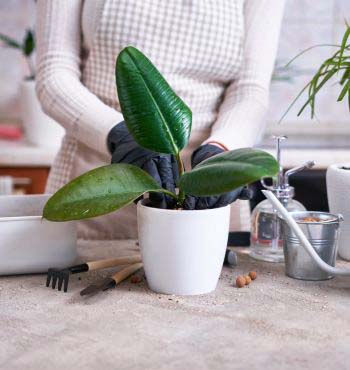
Ficus plants are not only admired for their lush green foliage and charming appearance, but they also serve as decorative assets for both indoor and outdoor spaces. They can add a touch of elegance and natural beauty to any setting, enhancing the overall ambiance and elevating the interior or exterior design. Let’s explore how ficus plants can be utilized as decorative assets in various ways.
Enhancing Interior Design With Ficus Plants
Integrating ficus plants into interior design is a popular choice among homeowners and designers alike. These versatile plants have the ability to transform any space into a tranquil oasis. Whether you have a minimalist, contemporary, or tropical-themed interior, ficus plants adapt seamlessly, creating a harmonious balance between nature and the man-made environment.
- Indoor ficus plants act as living sculptures, adding a refreshing focal point to rooms and making a strong style statement.
- Their vibrant green leaves bring life and energy to dull corners, brightening up the atmosphere and creating a calming effect.
- Placing ficus plants strategically in larger spaces, such as living rooms and lobbies, helps to divide areas effortlessly and add a sense of privacy.
Using Ficus Plants In Outdoor Landscaping
Ficus plants are not limited to indoor spaces; they also thrive in outdoor landscapes. Incorporating ficus plants into your garden or patio can transform your outdoor area into a picturesque retreat, providing shade, privacy, and a serene environment for relaxation.
- When planted near windows or outdoor seating areas, ficus plants create a natural barrier, protecting you from prying eyes while adding a touch of intimacy to your space.
- Their large and wide-spreading branches create a canopy effect, shielding you from the scorching sun, and allowing soft dappled light to filter through.
- Ficus plants serve as a backdrop for other flowering plants, complementing their colors and adding texture, resulting in a visually captivating garden.
Creating Bonsai Trees With Ficus
If you have a passion for gardening, you can take your love for ficus plants to a whole new level by transforming them into stunning bonsai trees. Bonsai, a traditional Japanese art form, involves growing small and aesthetically pleasing trees in containers.
- Ficus plants are ideal for bonsai due to their ability to withstand indoor conditions and small root systems.
- With careful pruning and training, ficus bonsai trees develop beautifully twisted trunks and intricately textured branches, captivating onlookers with their miniature beauty.
- Their compact size allows you to showcase them on tabletops, shelves, or even as a centerpiece, adding an element of serenity and nature to any interior design.
Common Pests And Diseases Of Ficus Plants
Ficus plants, with their attractive foliage and easy care requirements, are a popular choice among houseplant enthusiasts. However, like any other plant, ficus plants are susceptible to pests and diseases that can affect their health and appearance. In this section, we will explore the common pests and diseases that you may encounter when caring for your ficus plants, and provide helpful tips on how to identify, treat, and prevent these issues.
Identifying And Treating Ficus Pest Infestations
Pests can wreak havoc on your ficus plants if left unchecked. It is important to be able to identify common pests and take prompt action to control their population. Here are some of the most common pests that may infest your ficus plants:
| Pest | Identification | Treatment | ||
| Aphids | Tiny, pear-shaped insects that cluster on new growth. | – Regularly inspect your plants for aphids. | – Use a strong stream of water to dislodge them from the leaves. | – Apply insecticidal soap or neem oil if the infestation persists. |
| Mealybugs | Soft-bodied insects covered in a white, cotton-like substance. | – Remove individual bugs and egg sacs using a cotton swab dipped in rubbing alcohol. | – Apply insecticidal soap or neem oil to control heavy infestations. |
Fungal diseases, such as leaf spot and root rot, can be detrimental to the health of your ficus plants. Here are some tips to prevent and manage fungal diseases:
- Avoid overwatering: Ensure proper drainage and allow the soil to dry out between waterings.
- Maintain good air circulation: Place your ficus plants in areas with adequate ventilation, and avoid overcrowding them with other plants.
- Prune infected areas: Remove any affected leaves or stems to prevent the spread of disease.
- Apply fungicides: If the fungal infection persists, you can use a suitable fungicide according to the manufacturer’s instructions.
Dealing With Common Issues In Ficus Plants
Aside from pest infestations and fungal diseases, ficus plants may encounter other common issues that can affect their overall health and appearance. Here are some of these issues and how you can address them:
- Yellowing leaves: This can be a sign of overwatering, nutrient deficiency, or inadequate light. Adjust your watering schedule, provide appropriate fertilization, and ensure your ficus plants receive sufficient sunlight.
- Leaf drop: Ficus plants are known for their natural leaf shedding, which can be triggered by changes in temperature, light, or water conditions. Maintain consistent environmental conditions to minimize leaf drop.
- Insufficient growth: If your ficus plants are not growing as expected, they may require more light or nutrients. Consider relocating them to a brighter spot and fertilizing regularly with a balanced plant food.
By understanding the common pests and diseases that ficus plants may encounter and taking proactive measures to prevent and manage these issues, you can ensure the health and vitality of your beloved plants.
Historical And Cultural Significance Of Ficus Plants
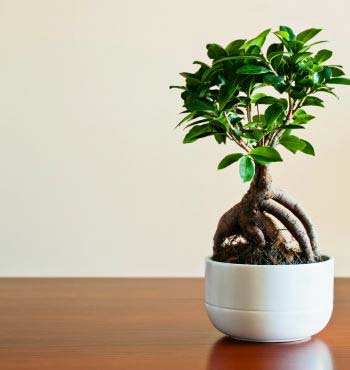
Ficus plants have a rich historical and cultural significance that spans centuries and continents. Their role in symbolism, mythology, ancient civilizations, and modern-day uses is a testament to their enduring presence in human society.
Symbolism And Mythology Surrounding Ficus
Ficus plants have been steeped in symbolism and mythology across various cultures. In Hinduism, the banyan tree, a type of ficus, is considered sacred and is often associated with the god Vishnu. In Chinese culture, the ficus symbolizes longevity and prosperity, and is revered as a symbol of unity and harmony. The fig tree, another type of ficus, holds significance in Christianity, as it is linked to various biblical stories and represents fertility and abundance.
Ficus Plants In Ancient Civilizations
Ficus plants have played a vital role in ancient civilizations. In ancient Egypt, the fig was revered for its nutritional value and was also associated with religious ceremonies. The ancient Greeks and Romans also held the ficus tree in high regard, believing it to be a symbol of fertility and abundance. In addition, the ficus played a key role in the mythology and religious practices of the Mediterranean region.
Modern-day Uses And Significance
In modern times, the significance of ficus plants extends to various realms. They are widely used in landscaping and gardening for their aesthetic appeal and air-purifying properties. Additionally, ficus plants continue to hold cultural and religious significance in many parts of the world, and their timeless symbolism remains ingrained in the fabric of society.
Ficus Plants In Sustainable Gardening
Ficus plants are an excellent addition to sustainable gardening practices due to their numerous environmental benefits. These versatile plants play a crucial role in eco-friendly landscaping, improving air quality, and contributing to biodiversity conservation.
Benefits Of Ficus In Eco-friendly Landscaping
Ficus plants are highly adaptable to various climatic conditions, making them sustainable choices for landscaping. They require minimal water and maintenance, reducing the overall environmental footprint of a garden. Their ability to thrive in urban environments also promotes natural greenery in cities, contributing to a healthier and more sustainable urban ecosystem.
Ficus Plants For Improving Air Quality
- Ficus plants act as natural air purifiers, effectively filtering out pollutants and toxins from the atmosphere, thus improving air quality. This makes them an excellent addition to any sustainable garden, especially in urban areas where air pollution is a concern.
Contributions To Biodiversity Conservation
- The presence of Ficus plants in gardens attracts a diverse range of insects, birds, and other wildlife, contributing to the conservation of local biodiversity. This fosters a balanced and harmonious ecosystem, thereby enhancing the overall environmental sustainability of the garden and its surroundings.
Propagation And Reproduction Of Ficus Plants
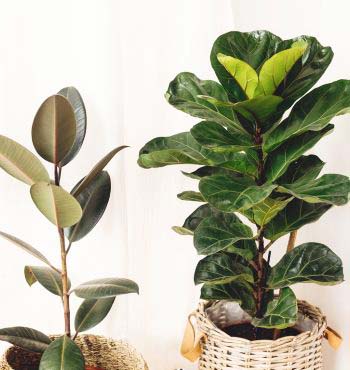
The propagation and reproduction of ficus plants are essential for expanding your indoor garden or outdoor landscape. Understanding the different methods and techniques to propagate ficus plants will help you grow a thriving collection of these beautiful and versatile plants. In this blog post, we will explore the various methods of propagating ficus plants, including seed germination and cutting propagation. We’ll also provide expert tips to ensure your reproduction efforts are successful.
Methods Of Propagating Ficus Plants
There are several methods to propagate ficus plants, each with its own advantages and considerations. Let’s take a closer look at two popular techniques: seed germination and cutting propagation.
Seed Germination
Seed germination is a common method used to propagate ficus plants. To start, collect mature seeds from an existing ficus plant and clean them carefully. Prepare a seed-starting tray filled with well-draining potting mix. Place the seeds on the surface of the soil and cover them lightly with a thin layer of soil. Ensure the soil remains consistently moist but not waterlogged, and keep the tray in a warm and well-lit area. In a few weeks, you should see tiny seedlings emerge, ready for transplanting.
Cutting Propagation
Cutting propagation is another effective method for propagating ficus plants. Start by selecting a healthy stem or branch from the parent plant. Using a clean, sharp pair of pruning shears, cut a 4 to 6-inch section of the stem just below a leaf node. Remove the leaves from the lower half of the cutting and immerse the bottom end in a glass of water or a rooting hormone solution. Place the cutting in a warm and bright location, ensuring it receives indirect sunlight. After a few weeks, roots should begin to form, indicating successful propagation. At this point, you can transfer the cutting to a pot filled with well-draining potting soil.
Tips For Successful Reproduction Of Ficus
To enhance your chances of successful reproduction, keep in mind the following tips:
- Choose healthy parent plants with vibrant foliage and strong growth, as this will contribute to the quality of the propagated plants.
- Ensure your potting soil is well-draining to prevent waterlogged conditions that can lead to root rot.
- Provide consistent watering, allowing the soil to dry slightly between watering sessions.
- Place your ficus plants in a location with bright, indirect sunlight, as excessive direct sunlight can scorch the leaves.
- Keep track of the growth progress, monitoring for any signs of pests or diseases that may hinder the reproduction process.
By following these tips and utilizing the appropriate propagation method for ficus plants, you can expand your collection and enjoy the beauty these plants bring to your environment.
FAQ Of Types Of Ficus Plants
What Are The Different Types Of Ficus Plants?
Ficus plants come in various types, including Ficus benjamina, Ficus lyrata, Ficus elastica, Ficus microcarpa, and Ficus religiosa.
How Do I Care For Ficus Plants?
To care for Ficus plants, provide bright indirect light, water when the top inch of soil feels dry, and keep them away from cold drafts.
Can Ficus Plants Survive Indoors?
Yes, Ficus plants can thrive indoors as long as they receive enough light and are kept away from extreme temperatures and drafts.
Are Ficus Plants Easy To Maintain?
While Ficus plants are generally easy to care for, they can be finicky with changes in environment, so consistent care is important.
Do Ficus Plants Have Any Specific Requirements?
Ficus plants prefer well-draining soil, moderate humidity, and benefit from occasional pruning to maintain their shape and promote growth.
Conclusion
With their diverse appearances and varying care requirements, ficus plants offer a wide range of options for plant enthusiasts. From the popular Ficus lyrata with its large, fiddle-shaped leaves to the delicate and trailing Ficus pumila, there is a ficus plant to suit every taste and skill level.
Whether you are a beginner or an experienced gardener, incorporating ficus plants into your indoor or outdoor space can add beauty and greenery to any environment. So why wait? Start exploring the world of ficus plants today, and bring nature’s beauty into your own space!
